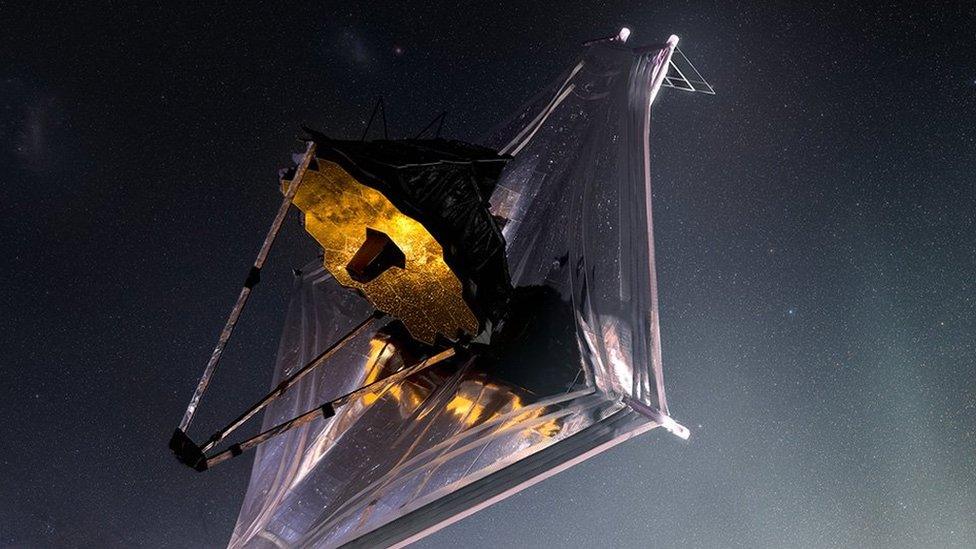Nasa's James Webb space telescope has fully assembled
- Published
- comments

Artwork: Webb is now fully unfolded in space
The biggest astronomy telescope ever sent into space has fully unfolded.
The James Webb space telescope will be able to look back in time to just a few hundred million years after the Big Bang - which was thought to have happened more than 13.5 billion years ago.
It was launched into space on Christmas day but its gold reflector centrepiece only opened fully on 8 January.
The mirror had been folded up for the launch and had to be released once it was in space, which was a tricky and delicate process.
Scientists hope the telescope will transform the way we explore space, showing first ever stars to light up the universe.
They also want to train the telescope to find atmospheres of distant planets to see if those worlds might be habitable.
The James Webb Space Telescope (JWST) is a super-powerful version of other space telescopes like Hubble.
It's a mirror made of 18 segments specially designed to capture infrared light from the first galaxies that formed in the early universe.
The JWST is the biggest telescope sent into space... so far.
It has taken 30 years to put together, cost $10 billion dollars to make and is a joint project from the European, American and Canadian space agencies.
There's still lots to do to before it's ready to take images of the universe. The next job is to let it get very cold.
The telescope is designed to work in very cold conditions. Unless Webb is taken down to a super-low temperature, its own heat energy will swamp the faintest of signals and the stars won't be visible.
The telescope began life in space in a tube, but was designed to "unfold" like origami in reverse, according to Nasa.
This preparatory work will take five months or so, meaning we'll start seeing the first images from the telescope in June.
According to space agency officials, we should be prepared to be wowed.
"Webb has the potential to blow people away, even people who are used to the pictures from the Hubble Space Telescope - and I know that's hard to imagine," said Lee Feinberg, who's led the Webb mirror development team at the US space agency (Nasa).
"Webb is so powerful, almost anywhere we look we're going to be breaking new ground in a huge way," he told 麻豆社 News.
- Published9 November 2021
- Published20 May 2020
